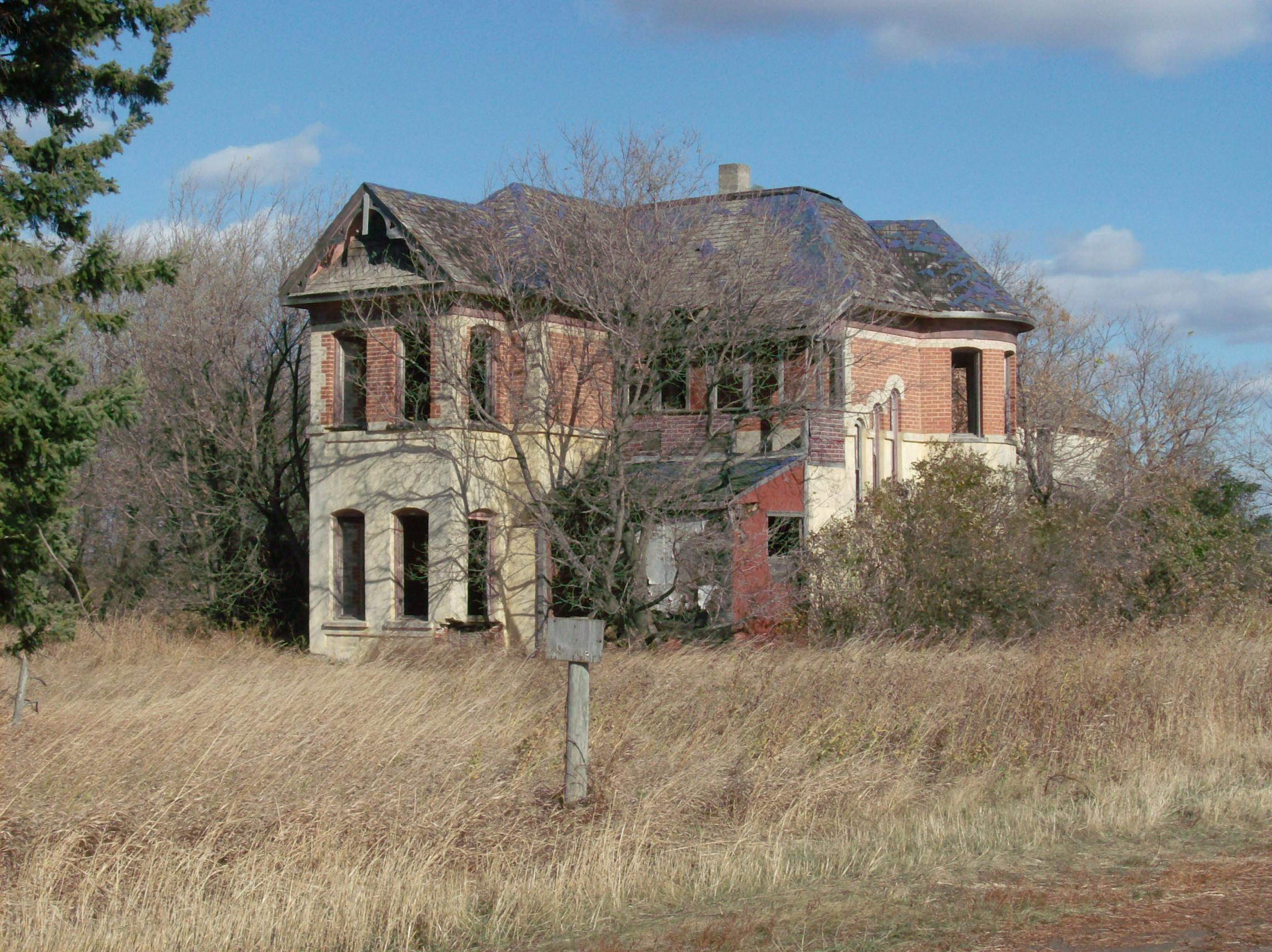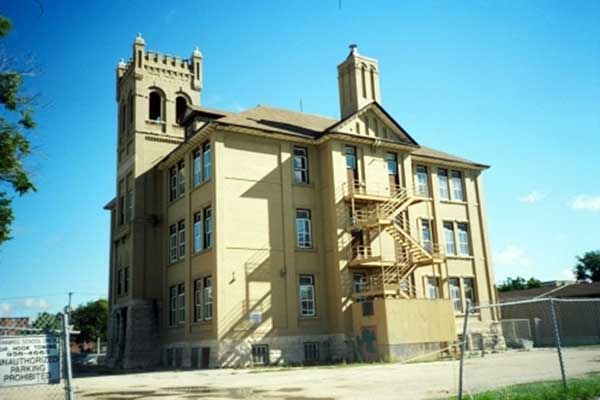Reid Dickie
In early 1900s, immigrants from Germany, Poland, Ukraine, Hungary, Ireland and China flooded into Winnipeg. One of the great challenges of the time was to teach them the English language as quickly as possible.

Strathcona School built 1904
In 1905, William Sisler became principal of newly opened Strathcona School at McGregor and Burrows, a role he’d fill for the next 16 years. Sisler came face to face with the problem of teaching English to a classroom of children who may speak 20 different languages by teachers who speak none of them.
Though cumbersome and only moderately effective, the phonetic method of teaching English was the accepted way of the time, requiring segregation of students into language groups. Sisler had a better idea. He called it the “direct method.”
The “direct method” took a lateral approach to diversity, appealing to all languages equally and simultaneously using pictures, objects and actions experienced by the students to build a vocabulary. Lessons were written on blackboards, easy songs and crafts provided repetition and references, students had individual gardens to teach them the names and ways of plants. Actions created meaning and repetition facilitated remembering, the result was English. The “direct method” was so effective it spread to other schools in Manitoba and beyond.

William J. Sisler 1868-1956
Being an honourable stalwart of the British Empire, Sisler insisted on military training with brightly dressed cadets doing drills. He encouraged sports for all his students and created opportunities for individual development, all of which helped generations of new Canadians find their linguistic way in their new home.
Noticing the trend among new immigrants for older teenagers to be out working rather than getting a rudimentary education in English and customs, Sisler convinced the school board to open Evening Schools. His night school idea was an immediate success with 200 showing up the first night, poignantly, many with day students holding their hands and helping them adapt.
Born near Newmarket, Ontario, young Bill Sisler came west working construction for the CPR when he was 18. He attended Winnipeg Collegiate Institute and later Trinity Medical College. He received his teaching certificate from Winnipeg Normal School.
For his stellar work at Strathcona, Daniel McIntyre, Superintendent of Schools, recognized Sisler as an exceptionally creative and engaging educator. In 1921, he chose Sisler to principal the first school in Winnipeg built

Dr. Daniel McIntyre 1852-1946
specifically as a junior high, Isaac Newton Junior High School. Sisler even got to name this precedent-setting school, choosing the British scientist/mathematician whom he held in considerable esteem.
Sisler stayed at Isaac Newton for 16 years during which it became a high school in 1933. He retired in 1938. In retirement, he authored several books: Peaceful Invasion in 1944, which details the challenges of teaching English to non-English students, and Pioneers of Rockwood and Woodlands in 1949. Peaceful Invasion is available in the Local History Room of the Millennium Library.
A few months after Sisler died in 1956, Sisler High School opened. Ironically, the opening of Sisler High resulted in Isaac Newton returning to its original role as a junior high, as it was when Sisler was its principal.
Sisler’s original life plan had been to teach only until he raised enough money to finish his medical education. Luckily for innumerable students thirsty to learn, while at Squirrel Creek School, Sisler decided to stick with teaching.
Find many more stories about Manitoba schools on my Schools page.
 with a small square tower. This is the opposite end of the building behind the silo. Still lived in, a beautiful buff brick two-storey house stands in the neatly mowed yard. Apparently none of these buildings has any heritage designation or protection although, due to their rarity, condition and site, the silo and barns merit recognition. Today they are heritage under duress. Without some form of acknowledgement, it is likely these buildings will all disappear from the prairie landscape, replaced with monoculture.
with a small square tower. This is the opposite end of the building behind the silo. Still lived in, a beautiful buff brick two-storey house stands in the neatly mowed yard. Apparently none of these buildings has any heritage designation or protection although, due to their rarity, condition and site, the silo and barns merit recognition. Today they are heritage under duress. Without some form of acknowledgement, it is likely these buildings will all disappear from the prairie landscape, replaced with monoculture.

























